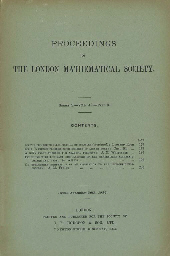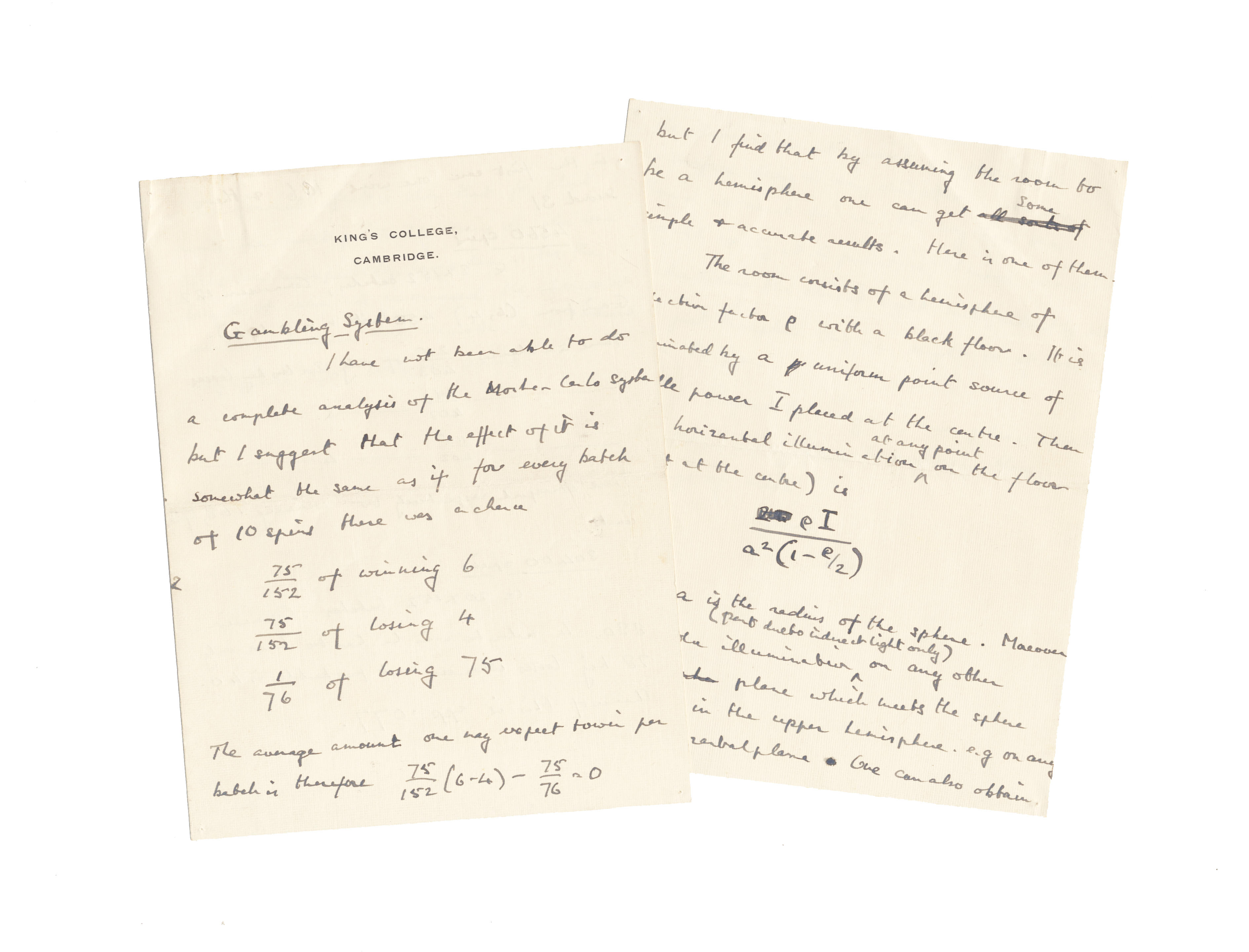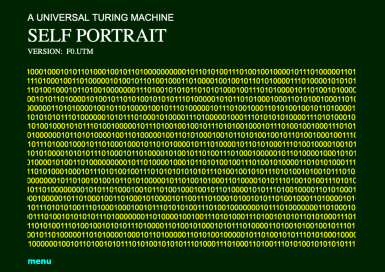TURING, Alan. 'A method for the calculation of the zeta-function.' Offprint from: Proceedings of the London Mathematical Society , ser. 2, vol. 48. London: 1943. 8° (270 x 183mm). 18pp., 180-197. Original stapled wrappers (faint creasing). [ With :] -- 'Some calculations of the Riemann zeta-function.' Offprint from: Proceedings of the London Mathematical Society , ser. 3, vol. 3. London: 1953. 8° (235 x 155mm). 20pp., 99-117. Stapled self wrappers (faint creasing at top corner of first two leaves).
TURING, Alan. 'A method for the calculation of the zeta-function.' Offprint from: Proceedings of the London Mathematical Society , ser. 2, vol. 48. London: 1943. 8° (270 x 183mm). 18pp., 180-197. Original stapled wrappers (faint creasing). [ With :] -- 'Some calculations of the Riemann zeta-function.' Offprint from: Proceedings of the London Mathematical Society , ser. 3, vol. 3. London: 1953. 8° (235 x 155mm). 20pp., 99-117. Stapled self wrappers (faint creasing at top corner of first two leaves). In about 1793, the 15 year old prodigy, Johann Carl Friedrich Gauss, noticed that prime numbers thinned out in a regular pattern as they became bigger. Bernhard Riemann refined Gauss' law in 1859 and arrived at a formula for the density of primes, the 'zeta function'. However, this remained without proof, and Turing could see that a machine could be used to attack the problem. In 1937, while at Princeton, Turing gained unofficial use of the machine shop of the Physics Dept., and built himself an electric multiplier. This was to be Turing's first hands-on experience of electrical engineering, and was to fore-shadow the mix of theoretical mathematics and practical electronics that he would employ at Bletchley Park. Using relays as switches, Turing tried to construct basic instruction tables using binary and Boolean algebra. This was the physical manifestation of the first Turing machine. In fact, it was not up to the job, and by 1939 he fashioned a new approach having inspected the analogue Liverpool tide prediction machine. The war, however, intervened, and the project was never fulfilled. But Turing was sufficiently intrigued to continue with the required theoretical mathematics, which is published in the current papers. (2)
TURING, Alan. 'A method for the calculation of the zeta-function.' Offprint from: Proceedings of the London Mathematical Society , ser. 2, vol. 48. London: 1943. 8° (270 x 183mm). 18pp., 180-197. Original stapled wrappers (faint creasing). [ With :] -- 'Some calculations of the Riemann zeta-function.' Offprint from: Proceedings of the London Mathematical Society , ser. 3, vol. 3. London: 1953. 8° (235 x 155mm). 20pp., 99-117. Stapled self wrappers (faint creasing at top corner of first two leaves).
TURING, Alan. 'A method for the calculation of the zeta-function.' Offprint from: Proceedings of the London Mathematical Society , ser. 2, vol. 48. London: 1943. 8° (270 x 183mm). 18pp., 180-197. Original stapled wrappers (faint creasing). [ With :] -- 'Some calculations of the Riemann zeta-function.' Offprint from: Proceedings of the London Mathematical Society , ser. 3, vol. 3. London: 1953. 8° (235 x 155mm). 20pp., 99-117. Stapled self wrappers (faint creasing at top corner of first two leaves). In about 1793, the 15 year old prodigy, Johann Carl Friedrich Gauss, noticed that prime numbers thinned out in a regular pattern as they became bigger. Bernhard Riemann refined Gauss' law in 1859 and arrived at a formula for the density of primes, the 'zeta function'. However, this remained without proof, and Turing could see that a machine could be used to attack the problem. In 1937, while at Princeton, Turing gained unofficial use of the machine shop of the Physics Dept., and built himself an electric multiplier. This was to be Turing's first hands-on experience of electrical engineering, and was to fore-shadow the mix of theoretical mathematics and practical electronics that he would employ at Bletchley Park. Using relays as switches, Turing tried to construct basic instruction tables using binary and Boolean algebra. This was the physical manifestation of the first Turing machine. In fact, it was not up to the job, and by 1939 he fashioned a new approach having inspected the analogue Liverpool tide prediction machine. The war, however, intervened, and the project was never fulfilled. But Turing was sufficiently intrigued to continue with the required theoretical mathematics, which is published in the current papers. (2)


.jpg)

.jpg)


.jpg?height=400)





Try LotSearch and its premium features for 7 days - without any costs!
Be notified automatically about new items in upcoming auctions.
Create an alert